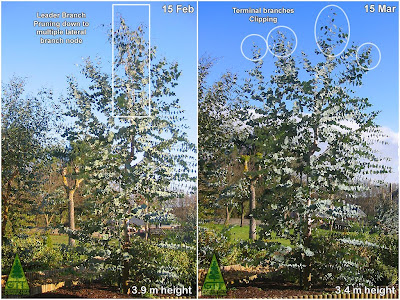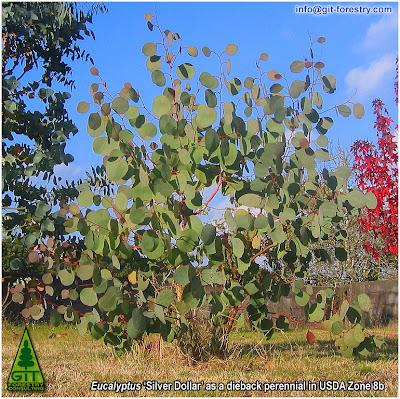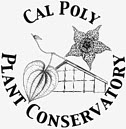EUCALYPTOLOGICS brings you today a
video depicting an impressive feat of naval, chemical, mining, agricultural, civil and forestry engineering in the mouth of the Amazon River. The
birth of Monte Dourado (El Monte Dorado, The Golden Forest) of Pará and Amapá, and the development of
Eucalyptus cultivation in Northern Brazil.
 Projeto Jari: Shipping a Built Pulp Mill From Japan to the Amazon
Projeto Jari: Shipping a Built Pulp Mill From Japan to the Amazon
An American in the Amazon
By
1930... a young North American
entrepreneur from Michigan (USA) with practical expertise in shipping industry received the first commissions to build a new type of transport vessel. Soon a
prosperous fortune was fueled as oil tankers first and supertankers later became a vital piece for successful worldwide trade.
In
1967... the
Invisible Billionaire, Daniel K. Ludwig envisioned some of the
catastrophic environmental effects of uncontrolled global population growth, and decided to do his part to
reduce the rate of defforestation of natural woodlands tied to an increasing demand of pulp and paper products. An thus,
Projeto Jari was born.
From
1967 to 1981...
more than 750 million dollar investments by Ludwig included the purchase of
1,200,000 hectares of very sparsely inhabited land at both shores of the Jari River; starting 100,000 hectares of
Gmelina arborea timber crops to sustain a renewable source of raw fibre;
building the port of Munguba for prospective exports plus a connected
network of roads and railroads;
founding the city of Monte Dourado and providing it with hospitals, schools, nurseries and housing; and launching
agricultural schemes for rice cultivation and cattle production.
Projeto Jari: The Floating Pulp Mill Video
Arrival of the pulp mill to Jari after 25,000 km of trasoceanic towing. Video courtesy Edda Narciso
In
1978... the shipping magnate received a
fully built ship-shaped pulp mill factory previously commissioned at Japanese Kure dockyards and
towed it in 85 days accross the Pacific, Indic and part of the Atlantic to the mouth of the Amazon River, and
up the river to the Jari. Just as we are due its
30th anniversary, you can watch the arrival and installation of the travelling factory in the video above. A
combined feat of naval, chemical and civil engineering. Not to mention a costly venture even at such latitudes.
Unfortunately, establishing tree farms in the tropics is not an easy task. Neither for trees nor for people.
Timber yields of Gmelina were poorer than anticipated in these conditions of soil and climate, operating costs were high, volume of investment astronomic, and short term returns modest. However all the needed pieces were set up for future profit, except the suitable trees. And then...
Eucalyptus based pulp & paper industry keeps Jari afloat
 Jari Celulose - World Class Eucalyptus Cellulosic Pulp Industry
Jari Celulose - World Class Eucalyptus Cellulosic Pulp IndustryToday... Monte Dourado is inhabited by 20,000 Brazilian citizens, the port of Munguba
exports over 300,000 tonnes of Eucalyptus cellulosic kraft pulp per year, Jari's pulp mill uses state-of-the-art low environmental impacting
ECF technologies for bleaching, and its
renewable raw fibre supply (70%
Eucalyptus, 20%
Gmelina, 10%
Pinus) has been
certified by FSC for its sustainable forest management.
In addition to the
Eucalyptus based industry,
one of the finest sources of kaolin clays in Brazil exploited under sensible practices (including habitat restoration) comes also from the Jari and provides raw materials for a multitude of final uses.
Industrial procesing of CADAM (Caulim da Amazonia SA) Jari Kaolinite. Video courtesy Edda Narciso Among these final products,
coated paper. So one of the
finest short fibre cellulosic pulps and one of the
finest coating materials are both
exported from the Jari to become some of the highest quality printing papers in the world.
Not bad as a result for the crazy dream of an American in the Amazon!
Daniel K. Ludwig died in 1992 at age 95. His legacy includes a share of profits in the Jari until 2026.
Simple Math for People Worried About "Evil" Eucalyptus Propaganda
JARI CELULOSE= +1,000,000 hectares = 350,000 tons of pulp per year
- Eucalyptus plantations = 52,000 hectares (-3% of their landbase)
- Environmental recovery & preservation = +1,000,000 hectares (+90% of their landsbase)
States of Pará & Amapá = 139,050,409 hectares
Jari Eucalyptus plantations = 0.037% of Pará & Amapá; 0.06% of Brazil
Brazil = 851,487,700 hectares
- Soybean= 22,949,000 ha ( 2.69% of Brazil)
- Corn = 11,559,000 ha ( 1.36% of Brazil)
- Sugar Cane = 6,172,000 ha (0.72% of Brazil)
- Rice = 3,916,000 ha (0.46% of Brazil)
- Wheat = 2,361,000 ha (0.28% of Brazil)
Combined major agricultural crops = 46,957,000 ha (5.5% of Brazil)
Eucalyptus plantations = circa 4,000,000 hectares
(0.5% of Brazil, LESS THAN 1%!)
Do You Still Believe "the evil " Eucalyptus monocultures are taking over the world??




























